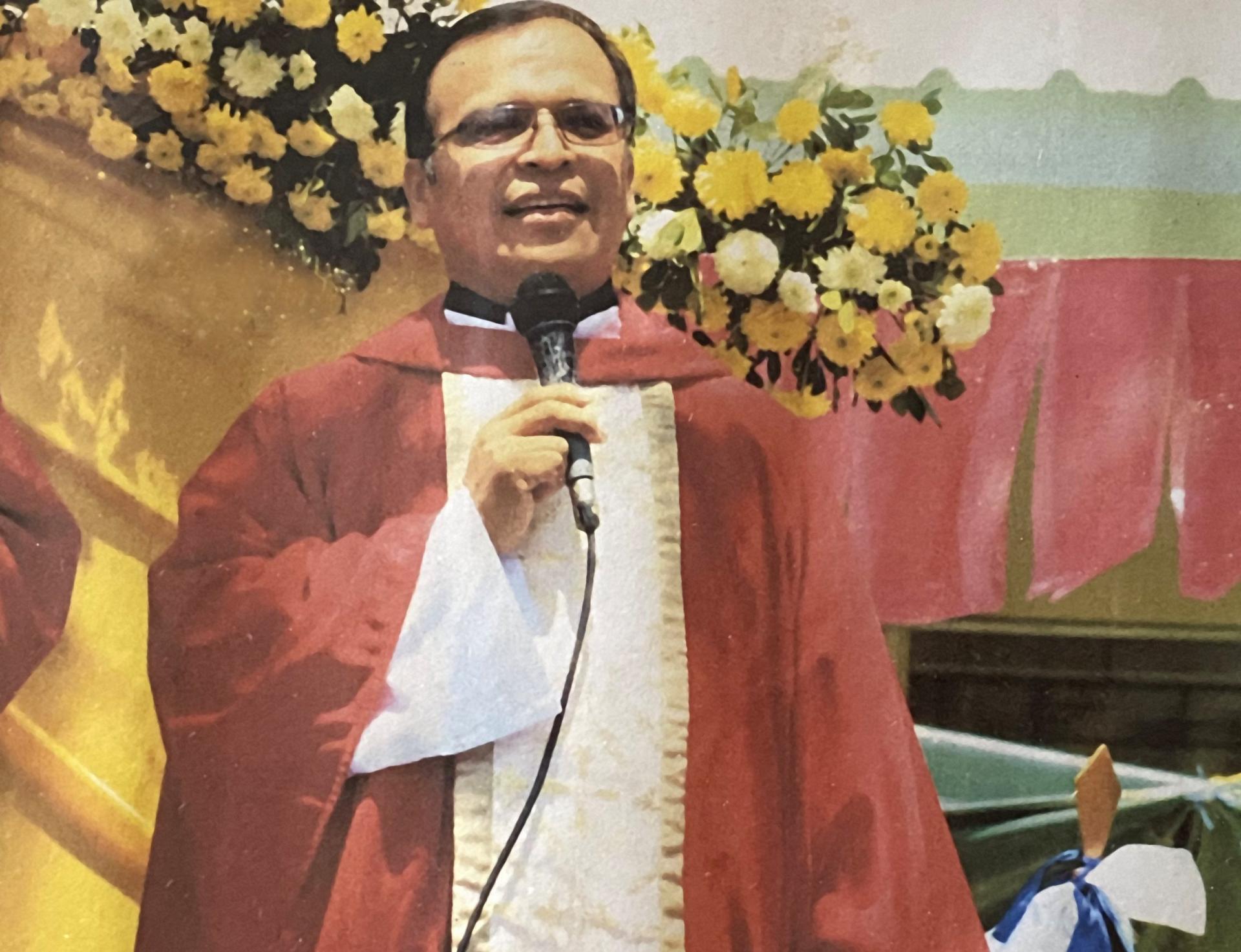SANTIAGO DE MARIA, El Salvador — He slept surrounded by philosophy.
“Truths, certainties,” Father Ricardo Cortez wrote in a diagram of the “metaphysical description of the concept of a person” with definitions that he, as the rector of the St. Oscar Romero Seminary, had sketched in Spanish and Italian.
In another diagram posted near his bed, he sketched God in relation to humanity, along with a stick figure of a crucified Jesus, explaining “common dimensions of those who believe in God.”
The diagrams, whose information Cortez absorbed to share with his students, are about the only belongings left undisturbed in his seminary residence, ransacked by police Aug. 7, the morning after he was found dead.
“He was a person who got along with everyone, not a person of conflict,” said Father Rigoberto Machuca, explaining why he was stunned when he and others found out that Cortez had been shot, execution style, as he headed to Mass.
Just weeks before his killing, Cortez had written to the U.S. Conference of Catholic Bishops requesting economic help from Subcommittee on the Church in Latin America for his beloved seminary, damaged by tropical storms that barreled through Central America in 2020 and struggling from the economic effects of COVID-19.
In late 2020, the committee approved a $60,000 request — $10,000 more than the rector had asked for — to help carry out the work of the seminary named after El Salvador’s first saint and beloved human rights icon, St. Oscar Romero.
For more than 50 years, the Collection for the Church in Latin America, which will be asking for donations in a second collection at U.S. parishes Jan. 24 this year, has funded pastoral programs, seminarian and religious formation, and youth and family ministries as a sign of solidarity between Catholics of the United States and those in Latin America.
“They may have taken away his life physically, but we don’t have the slightest doubt that he’s interceding for us and he’s continuing his work in a new reality, praying for us so that it (the work) continues,” said Bishop William Iraheta of Santiago de Maria, home to the seminary where men from four Salvadoran dioceses discern the priesthood.
The financial gift, a sign of solidarity from the United States, was an “answer from God” to continue with the work the priest so loved, Iraheta told Catholic News Service, expressing “our gratitude to our brothers and sisters in the United States, who give with love, and share what you’ve earned from your hard work, with us.”
“This will help give life to all that Father (Ricardo) put his effort into … we pray for you and we feel your closeness and solidarity,” Iraheta said.
For Iraheta, the killing of the rector was the second time he’s had to bury a slain priest in less than three years. In 2018, Father Walter Osmir Vásquez Jiménez, a priest in his diocese, was abducted by a group of armed men wearing masks as he was traveling with parishioners to officiate a Holy Thursday Mass. His body was later found, rendered lifeless by gunshot.
Though Cortez was rector in Santiago de Maria, he was incardinated in the neighboring Diocese of Zacatecoluca and tended to a parish there on weekends. That’s where he was traveling when he was killed. As with Vasquez’s assassination, no one has been charged in Cortez’s killing.
In May 2019, Father Cecilio Perez, a priest from the Salvadoran Diocese of Sonsonate, was killed in his parish residence. A former sacristan was charged with his murder and convicted of the crime in May 2020.
El Salvador, as well neighboring Guatemala and Honduras — often referred to as the Northern Triangle — frequently rank among the most violent countries not at war. Gangs are rampant, but it’s hard to tell whether the killing of three priests in about 18 months signals a pattern or a particular type of persecution.
Father Manuel Acosta, a priest for the Diocese of Chalatenango and theology professor at San Salvador’s José Simeón Cañas Central American University, also known as the UCA, knew the three slain priests, because each had been a student at some point.
Cortez, however, later became a colleague as he took on the task of founding the seminary in eastern El Salvador. For a country with few resources, the killing of a priest like Cortez was particularly painful because his studies in Rome, his 16 years in the priesthood and formation were hard to replicate.
Some wonder whether Cortez’s killing itself may have been a type of martyrdom. To Acosta, it is another in a long line of killings of clergy in the country, one that goes as far back as the saint after whom the seminary is named.
Romero was martyred in 1980 after speaking out against abuses and killings of innocent civilians at the start of the Salvadoran conflict.
“The Salvadoran church, because of its incarnation in the Gospel, has run the same risks as the most humble,” Acosta said. “So, three priests (in recent years) have participated in the passion of our people. We have taken part in the cross the people must bear, and we have participated by giving of our blood.”
To Oblate Father Leo Perez, director of the Latin America collection, funding the project favored by Father Cortez, which arrived at USCCB’s offices after he died, meant taking part in the dreams of the priest beyond death. The request “arrived after his death, as if he was speaking to us from his place in heaven.”
















